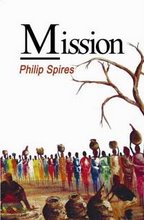At 8pm on November 26, 2025 in the Centro
Social in Denia, we heard Gülsin Onay play the piano.
Programa
Johann Sebastian Bach - Partita No. 1 in B flat major, BWV 825
Wolfgang Amadeus Mozart - Sonata in A major, KV331
Ahmed Adnan Saygun - 2 preludes in Aksak rhythm, op.45 nos.4 & 12
Frédéric Chopin -
Sonata in B minor, op.58
I am breaking a self-imposed rule not to review concerts that I have been partly responsible for presenting. In the past, there were a lot of opportunities to do so, and I became repetitive. But the reason for this departure from the norm is to pay some homage to the exceptional talent, artistry and musicality of Gülsin Onay, who performed for us last night in the Denia International Piano Festival, courtesy of a group that I assist with, arsaltacultural.com.
On the face of it, the concert did not look like it was to be so memorable an experience. Notwithstanding two short pieces by a contemporary Turkish composer, the program looked rather conventional, a Bach partita, a widely played Mozart sonata and the Op58 Chopin sonata. But appearances can be deceptive. With live music, there is always the possibility that it will surprise and, on this chilly evening in November, there proved to be nothing conventional about the playing of our soloist, Gülsin Onay.
From the moment she started the Bach Partita No1, BWV825, the audience could collectively sense that they were in the presence of a true artist. The touch, the phrasing, and the sheer musicality of the playing immediately communicated that Gülsin Onay was a supreme storyteller. The plot of the musical story was always uppermost in her playing of the Bach Partita, which in other hands can so often seem like a procession of unrelated notes, if played unsympathetically. Here, the shape of the story, the juxtaposition of dances with harmonic and rhythmic complexity was crystal clear, so clear that many people listening were really experiencing the music for the first time, no matter how many times they had heard it before.
The Mozart Sonata, that followed, K331, is also well known. The Alla Turca rondo that forms the finale is recognizable to those who don’t even know the music of Mozart. And in the hands of this Turkish pianist, the concordance of music and performer was perfect. Indeed, the whole piece was couched in remarkably un-Mozart-like emotion. The description only holds for pianists who follow the dots religiously and do not interpret them, and this charge could never be levelled against Gülsin Onay. This is not to say that she took liberties with the score. She didn’t. But she played the everything with the insight of a true musician, a real artist.
A complete change of style was needed from Gülsin Onay for two preludes in Aksak rhythm, op45 nos4 & 12, by Ahmed Adnan Saygun. They were rhythmically interesting, rather percussive pieces, and the ease with which Gülsin Onay made the transition to a different musical world is surely testimony to the quality of her relationship with this composer’s work over the years.
But it was her playing of the Op58 Sonata of Chopin that really convinced this audience of the pianist’s artistry. It should have come as no surprise since the program notes stated that she had been awarded a state medal by Poland for her interpretation of Chopin.
Here was a work that I have heard perhaps thousands of times. On the basis of last night’s performance, however, I did not even know it, because almost every note, every phrase seemed new. It was as if we had Frederick Chopin in the auditorium explaining exactly what each phrase of the Sonata meant. The communication was that direct, and like all good stories, it captivated everyone until the last note. It was a performance of such a virtuosity and artistry that I cannot recall, after 50 years of listening to music, anything that was ever equal to it.
Gülsin Onay received a standing ovation and responded by
playing two encores. Ondine from Ravel's Gaspard
de la Nuit is a piece that many pianists would prefer not to attempt. In her
hands, it was a door to enter the private universe of Maurice Ravel, so
perfectly did each phrase fit into the space revealed by Ravel’s imagination.
And then the Op9 No2 Nocturne of Chopin brought the evening to a close. Again it
was a familiar work, but it is rarely played like this, with communication, not
mere beauty of sound uppermost. By the end, I found myself saying that Gülsin Onay was
simply one of the finest pianists I had ever heard.






















